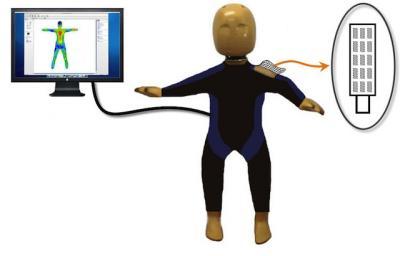Child abuse is a leading cause of fatality in children 0-4 years of age. Roughly 1,500 children are fatally injured each year in association with child abuse and 150,000 are permanently disabled. Many serious injuries and fatalities could be prevented if it was possible to distinguish between injuries associated with abuse and those caused by accidents. Clinicians, child protective services and law enforcement personnel should be equipped with improved knowledge related to the types of injuries that are possible from common household accidents that are often falsely reported to be the underlying cause of injury in child abuse. The ability to detect child abuse at its earliest stages has proven to be critical in the prevention of escalating injury severity and even death. Bruising can be an early sign of child abuse, but can also be associated with accidental trauma making it challenging to distinguish between an accident and abuse. However, clinical studies have begun to differentiate bruising characteristics such as location on the body, size and number across accidents and abuse.
A research team from the University of Louisville has developed a force sensing skin that can be adapted to a child surrogate, or test dummy, to identify potential bruising locations during mock laboratory experiments of accidents and abusive events.
"The presence, distribution and location of bruising on a child's body provide a roadmap documenting a child's exposure to impact; this information can be critical in a forensic analysis of a child's injuries," states Gina Bertocci, PhD, senior author of the paper published in TECHNOLOGY.

The surrogate bruising detection system consists of a sensing skin adapted to a 12 month old child surrogate (anthropomorphic test device -- ATD), data acquisition system and computerized body mapping image that dynamically displays impact forces imparted to the ATD during simulated injurious events such as falls or abusive trauma. The system displays and records potential locations of bruises caused by impact to the surrogate.
(Photo Credit: R Dsouza and G Bertocci -- Injury Risk Assessment and Prevention Laboratory, Department of Bioengineering, University of Louisville)
The system also includes the ability to dynamically display a body image mapping contact to the child surrogate along with the magnitude of force of each impact. "Custom force sensing arrays were designed and developed to contour to all body regions of the child surrogate to provide a comprehensive roadmap of exposure during laboratory experiments replicating household falls and abusive events", states Raymond D'souza, MS, the paper's lead author and PhD student.
Child surrogates have notoriously been used to study motor vehicle crash events to predict injury risk to the head, chest and femur, but to-date no effort has focused on assessing potential injuries to the skin or soft tissue since these injuries are not deemed to be life-threatening. The research team is in the process of systematically evaluating various factors that influence potential bruising locations on the child surrogate in simulated household falls. They intend to develop a knowledge base of bruising roadmaps associated with a variety of simulated events and to compare their findings with clinically based studies.
Source: World Scientific